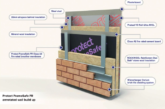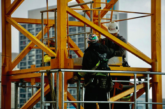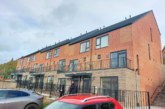The Association for Specialist Fire Protection (ASFP), the UK’s leading association for the passive fire protection sector, is supporting calls for greater funding to address identified fire safety failings in tall buildings.
The move comes following the Government’s announcement of its five point plan to address unsafe cladding issues and the defeat in Parliament of an amendment to the Fire Safety Bill, which sought to prevent fire safety and cladding remediation costs falling on leaseholders.
While welcoming the announcement of additional funding for cladding remediation on tall buildings, the Association believes the scheme does not go far enough since it offers no assistance to pay for other identified fire safety failures, such as problems with fire doors and other compartmentation measures.
The Government’s five point plan to address unsafe cladding issues, announced by Secretary of State for Housing, Communities and Local Government Robert Jenrick on 10th February, included an additional £3.5bn in funding for the removal and replacement of cladding on buildings over 18m in height; and a loan scheme for leaseholders to pay for remediation in buildings between 11 and 18 metres, with a maximum repayment of £50 each month. It also included plans to introduce a developer levy, which will apply to developers who seek permission to develop certain high-rise buildings in England. However it makes no mention of funding to rectify other fire safety defects.
ASFP CEO Niall Rowan declared: “The ASFP believes that money should be made available to cover all identified defects and not just cladding. While there is some degree of discussion over whether the statutory guidance regarding cladding is clear or not, there is no such argument about the requirements of compartmentation that are included in Approved Document B and the national equivalents in Wales Scotland and Northern Ireland.
“We welcome the Government’s five point plan to address cladding issues and believe the proposals outlined in the Building Safety Bill will go some way to improve quality and competency within the design, construction and inspection helping to prevent defects from arising in the future. However, we believe that the remediation of identified fire safety failures in existing buildings that are not the fault of the leaseholders or building owners concerned should be supported by appropriate funding.”









